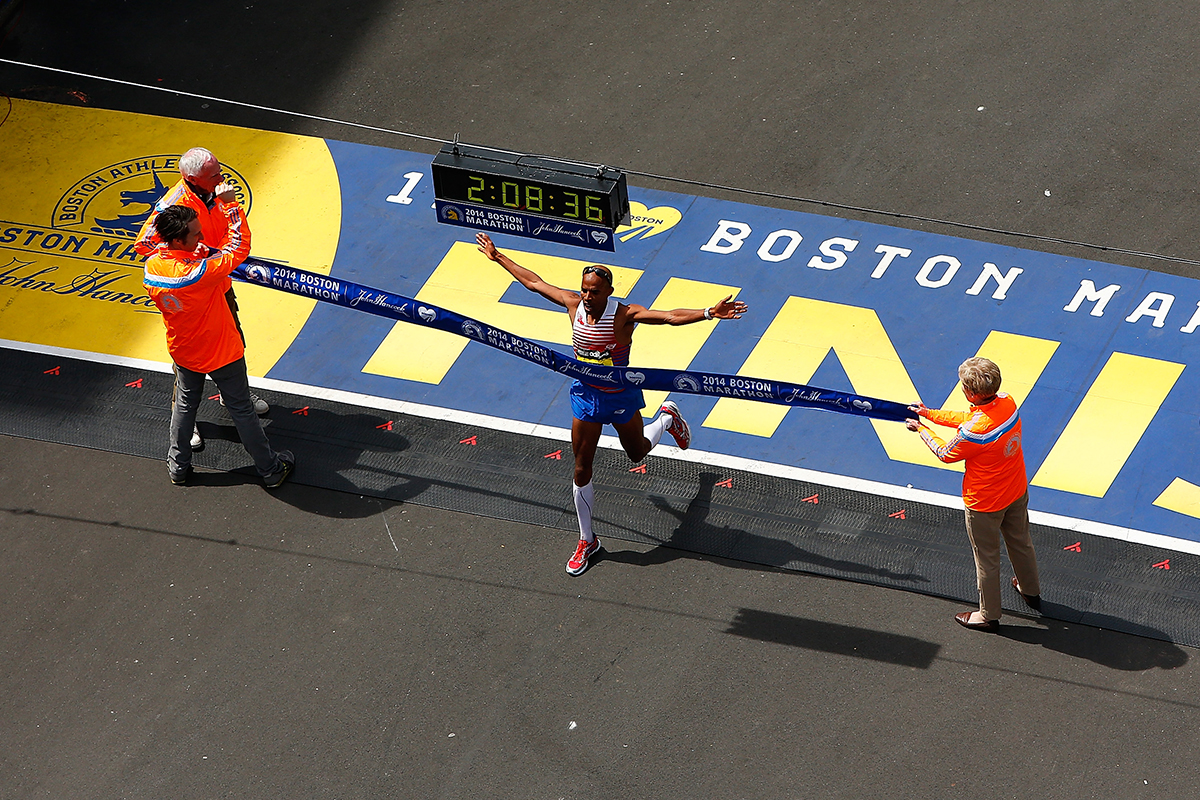Earlier this month, Ethiopian long-distance runner Derara Hurisa finished the Vienna Marathon in 2:09:22, edging out Kenyan Leonard Langat by three seconds for first place. But a few days later, Hurisa was disqualified. According to race organizers, Hurisa’s shoes “were not compliant with the rules.”
He ran in a pair of Adidas Adizero Prime X trainers, which have a sole thickness of 50 millimeters. When World Athletics first started policing so-called super shoes in early 2020 (not long after Nike’s carbon-plated Next% series started toppling marathon records), one of the organization’s main focuses was “stack height.” For road race events, the officials decided, runners wouldn’t be allowed to compete in any shoe with a stack height above 40 millimeters.
So what was Hurisa thinking? Why run in a pair of “illegal” shoes? Adidas makes other well-regarded options, like the Adios Pro, and as a sponsored athlete, Hurisa would have access to whatever pair he needed for the race. The current public explanation is fairly vanilla: Hurisa’s handlers had signed a form promising he’d race in street-legal shoes, but Hurisa felt particularly fast in the Prime X trainers the week leading up to the marathon. He raced in them, he won, he learned later he shouldn’t have. Innocent mistake?

We can’t know for sure. Some in the running community have wondered if there’s more to the tale. How did no one on Hurisa’s team notice that he was still wearing his Prime Xs when he went to the starting line? How about the brand reps and photographers that Adidas sends to these events? It begs the question: What’s more valuable to Adidas? Hurisa quietly winning a mid-tier marathon with a great but certainly not unheard of time? Or Hurisa winning in a pair of shoes so fast they got him booted from the podium?
I’m far from the first writer who covers the sport to point out that running shoes have arguably become bigger stars — and led to juicier headlines — than runners themselves. Bad boy super shoes, the sort that apparently guarantee you a first-place finish (to say nothing of the fact that Hurisa won by just a few yards) sell. Adidas doesn’t really need help moving their carbon shoes; the Adios Pros sold out in 15 minutes when they first dropped, and today’s shoe in question, the Prime X, is currently sold out on Adidas’s site.
But these sorts of stories keep the hype train chugging right along, and help the brand steal attention away from Nike, Saucony and New Balance. Did Adidas deliberately have its 24-year-old star race in a pair of illegal shoes? Did they, perhaps, sit idly by and let Hurisa’s mistake happen? Or is this all just a giant, unfortunate misunderstanding? Unclear, on all accounts. The mere fact that Hurisa’s DQ has engendered this level of scrutiny, though, is a big enough deal in itself. For better or for worse, gear now dominates the sport’s conversation.
One thing that is certain: while hyper-fast shoes help every level of runner nab a new PR, only sponsored pros have to worry about legislative bodies measuring their stack height at the finish line. Assuming you can get your paws on a pair of Prime Xs, you could run in any event — from your local 5K to the New York Marathon — in them, and easily get away with it. It’s an interesting conclusion, considering Adidas was well aware of the “illegality” of the Prime X when it released the shoe.
The brand “consciously created” the Prime X “outside of the World Athletics guidelines,” and wanted runners to discover what sort of times become possible “when you throw the rule book away.” But what times are we really talking about, if the best runners in the world can’t wear these shoes in sanctioned races? Are these shoes, which are the most expensive running shoes Adidas sells (at $250 a pop), really meant for young stars from Ethiopia? Or have aging dads in Connecticut been the goal all along?
Thanks for reading InsideHook. Sign up for our daily newsletter and be in the know.

















